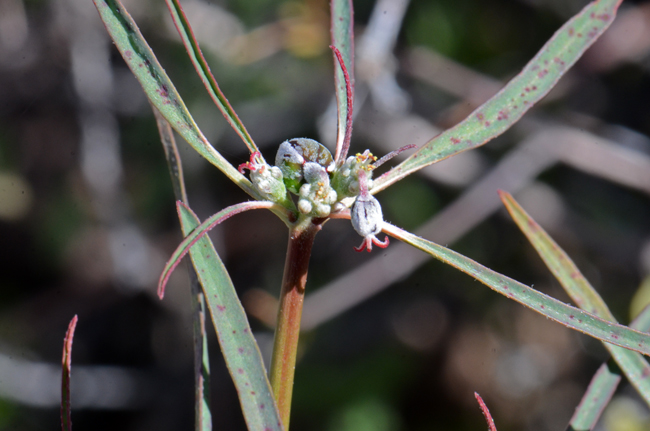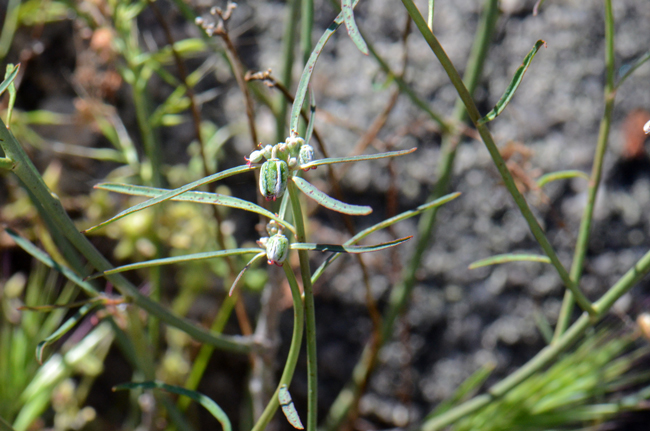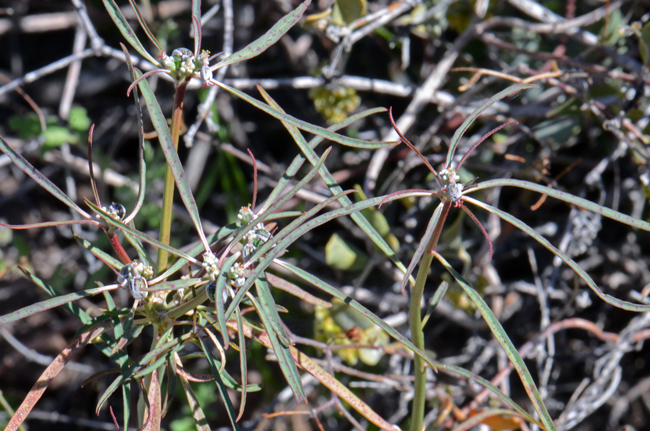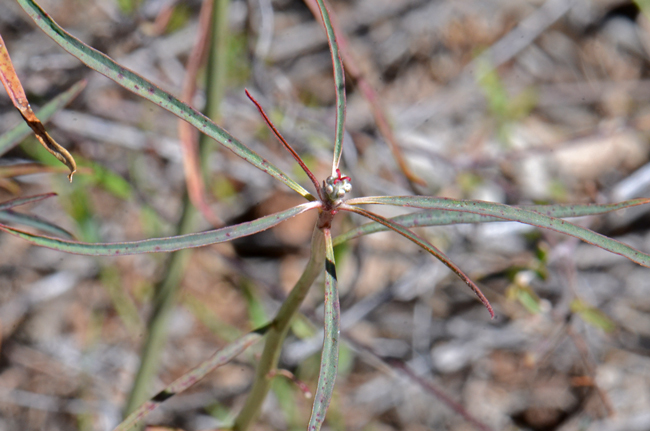Euphorbia eriantha, Beetle Spurge





Scientific Name: Euphorbia eriantha
Common Name: Beetle Spurge
Also Called: Desert Poinsettia, Mexican Poinsettia, (Spanish: Golondrina)
Family: Euphorbiaceae, Spurge or Euphorbia Family
Synonyms: (Euphorbia exclusa, Poinsettia eriantha)
Status: Native
Duration: Annual
Size: Up to 30 inches more or less (20") (1 to 5.8 dm)
Growth Form: Forb/herb; stems erect, branching ascending; plants hairy or glabrous, older plants becoming glabrous; foliage dark in color from greenish, reddish or purplish.
Leaves: Green, leaves long (2.5 inches - 7cm) narrow and pointed; alternate or distal and sometimes opposite, leaves sub-sessile or petioled; leaf margins often entire or minutely toothed on the tips; leaves hairy or becoming glabrous with maturity.
Flower Color: Green, becoming reddish or purplish with age; flowers male and female on same plant; inflorescence a cyathium surrounded by crowded distal leaves, flowers solitary or with few flowers clustered on branch tips; fruits 3-lobed capsule, oblong and flattened top to bottom.
Flowering Season: February to October in Arizona; March to April in California; January to December in Texas.
Elevation: 350 to 3,500 feet (300-3,500 ft (91-1067m)) in Arizona, below 3,000 feet (below 1,000m) in California.
Habitat Preferences: Canyons, dry hot rocky slopes.
Recorded Range: Beetle Spurge is found in the southwestern United State in AZ, CA, NM and TX. It is also Native to the deserts of Baja California and northern and central Mexico.
North America & US County Distribution Map for Euphorbia eriantha.
U.S. Weed Information: No information available.
Invasive/Noxious Weed Information: No information available.
Wetland Indicator: No information available.
Threatened/Endangered Information: No information available.
In the Southwestern United States: Arizona has 21 species of genus Euphorbia, California has 25 species, Nevada has 6 species, New Mexico has 22 species, Texas has 31 species, Utah has 12 species. All data is approximate and subject to taxonomic changes.
Comments: The genus Euphorbia is large with more than 2,000 species worldwide. In the southwest there are about 30 species or so. As with many species of Euphorbia, this species releases a milky sap of white latex which is toxic.
In Southwest Desert Flora also see Euphorbia heterophylla, Mexican Fireplant, Euphorbia incisa, Mojave spurge and Euphorbia radians, Sun Spurge.

